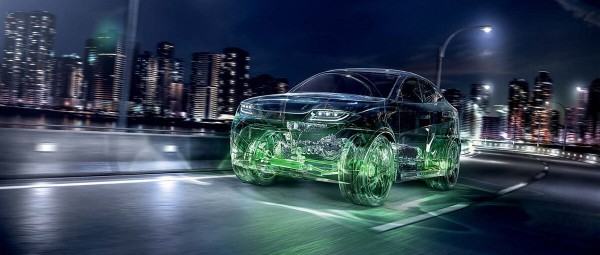Steering towards mechatronic chassis solutions
As the needs of automotive manufacturers rapidly evolve, Clément Feltz, President Chassis Business Division at Schaeffler, discusses the challenges the company faces in positioning itself as a major supplier of mechatronic systems for vehicle chassis.
Can you tell us about the Chassis Systems Business Division?
The Chassis Systems Business Division is one of four divisions of Schaeffler Automotive Technologies. It includes four Business Units: Chassis Solutions, Steering Systems, Smart Mobility and Schaeffler ByWire. It is evolving to adapt itself to the electrification and automation of the car park. By continuing to build on the excellence and quality of our manufacturing processes, the aim is to move development activities towards increasingly complex system levels. The Division still manages some mechanical components but is now focusing more on mechatronic solutions for chassis and New Mobility applications.
What are your main product lines?

We still supply customers with mechanical products such as ballscrews for steering or braking systems, but our main portfolio is evolving towards mechatronic solutions.
Our first mechatronic product was the active roll control system. This product has been in production since 2015 and we continue to develop it. Its development has allowed us to mature our skills in the fields of systems, electronics and software.
In 2023, we started production of a rear wheel steering system in response to growing market demand supported by the evolution towards electric vehicles. With the electrification of the car park, we see that the wheelbase has increased to install as many batteries as possible between the two axles. A larger wheelbase means a larger turning radius and therefore reduced manoeuvrability, whereas the intensification of traffic and urbanisation call for the opposite. Our system is based on a ballscrew with planetary rollers, which ensures better efficiency and better acoustics than competing solutions. By offering rear wheel steering angles of up to 10 degrees, we improve vehicle manoeuvrability. We already have firm orders for the serial development of six other applications which will start at the end of 2025.

As mobility and the needs of automotive manufacturers evolve more quickly, how are you positioning yourself in your segment?

Schaeffler is not a historic supplier of steering systems in this segment. However, with the evolution towards steering by cable systems (steer-by-wire), we saw an opportunity to participate in the establishment of this new technology. The first step is through the rear axle, but our goal is to offer solutions for front steering. To do this, we must continue to acquire the required skills. We capitalise on our internal know-how, as well as the acquisition of external skills.
An important next step in expanding our portfolio is the development of a first powerpack (electric motor with an electronic computer) for Electro Hydraulic Power Steering systems, which is found in heavy-duty applications. This is an essential step for us because it is the first electronic controller that we will define and develop ourselves.
This Dual Line controller is essential for offering steer-by-wire solutions. This first electronic controller will serve as a platform for all the other powerpacks that we use in our systems.
Beyond steering systems, we also work on mechatronic products. For example, an automated vehicle charging system. Weare developing the actuator which would be integrated into the vehicle to allow recharging when the vehicle is stopped. Whenyou get out of your vehicle it would recharge itself.
We also develop Variable Damper Systems (VDS) by reusing skills and technical solutions used today in thermal engines.
I can also mention our "Ride Height Adjuster" which is a system integrated into the 4-wheel shock absorber system that allows the vehicle’s cabin to be lowered or raised.
Beyond that, we are convinced that the world of completely autonomous vehicles, such as robot taxis or robot shuttles, is amarket that will grow strongly until the end of the decade. Due to the fact that our colleagues in the E-Mobility Division are developing electric axles, while we are developing by Wire steering systems, we have most of the essential systems to take responsibility for the development of the ‘Rolling chassis’ of this type of vehicle. In this context, we announced at the IAAMobility show in Munich, the creation of a partnership with the Dutch company VDL for the development and production of autonomous vehicles.

What are your challenges?

We want to position ourselves as a major supplier for mechatronic systems in the chassis field, in particular for new steering systems. As forthe issues, there are three. The first is industrial. Our biggest challenge is to be able to put the projects I talked about into production, while respecting the time, quality, cost triptych. The second challenge is human. The development of mechatronic systems requires different skills from those that exist in the mechanical world (software developer, system manager, functional safety specialist). These resources are in high demand given the development of electrification and automation of the fleet. Our challenge is therefore to acquire them. This is done in two ways: attract talent and capitalise on our internal skills. We’ve implemented a training plan called “Fit for mechatronics” to enable certain specialists in mechanical systems to acquire the skills to develop mechatronic systems.
The third challenge is the autonomous vehicle. Rolling chassis systems for autonomous shuttles of the future are obviously a bit of an adventure which will depend a lot on how this market will evolve. But from the point of view of an engineer, it is an exciting adventure.
